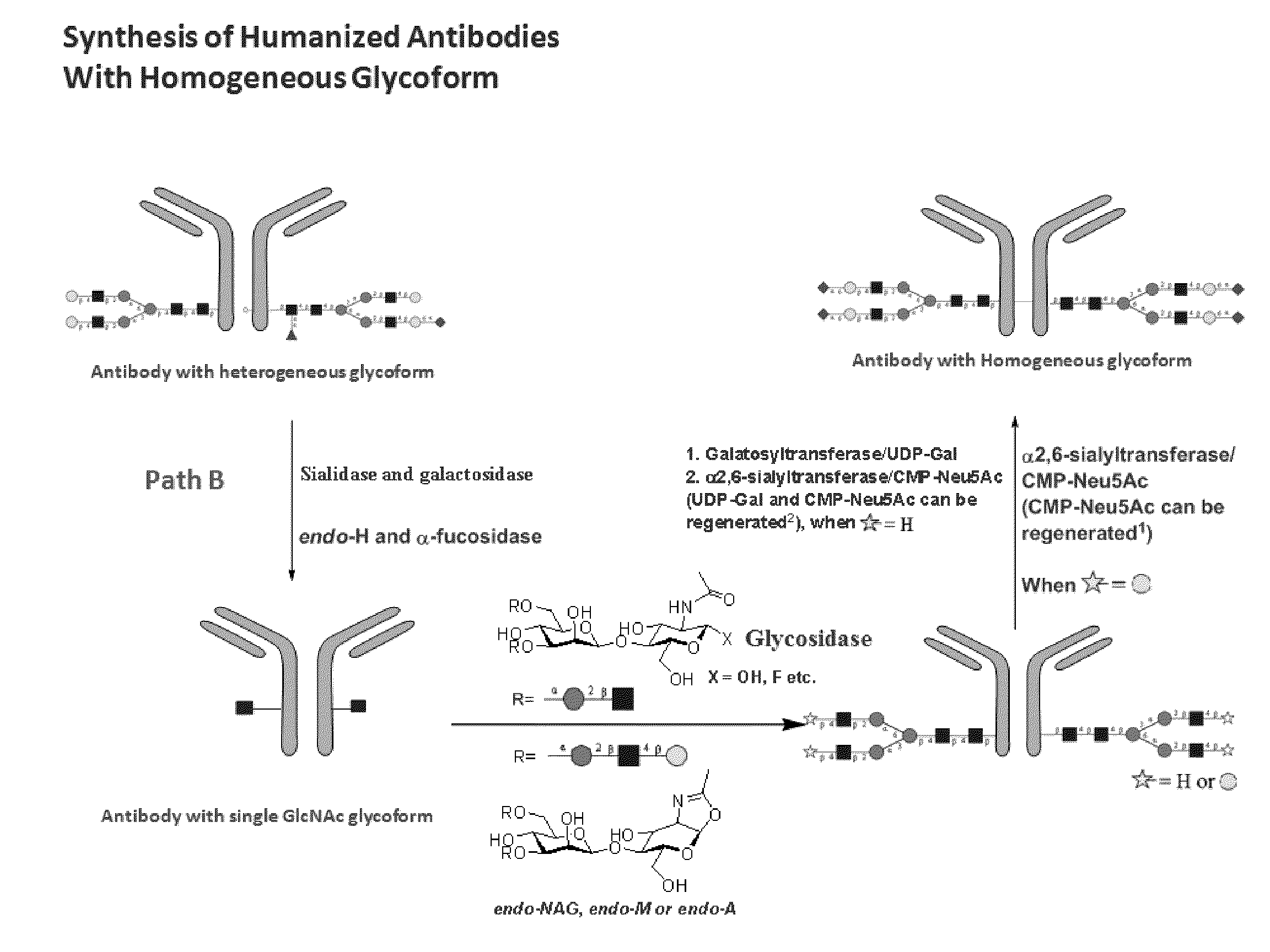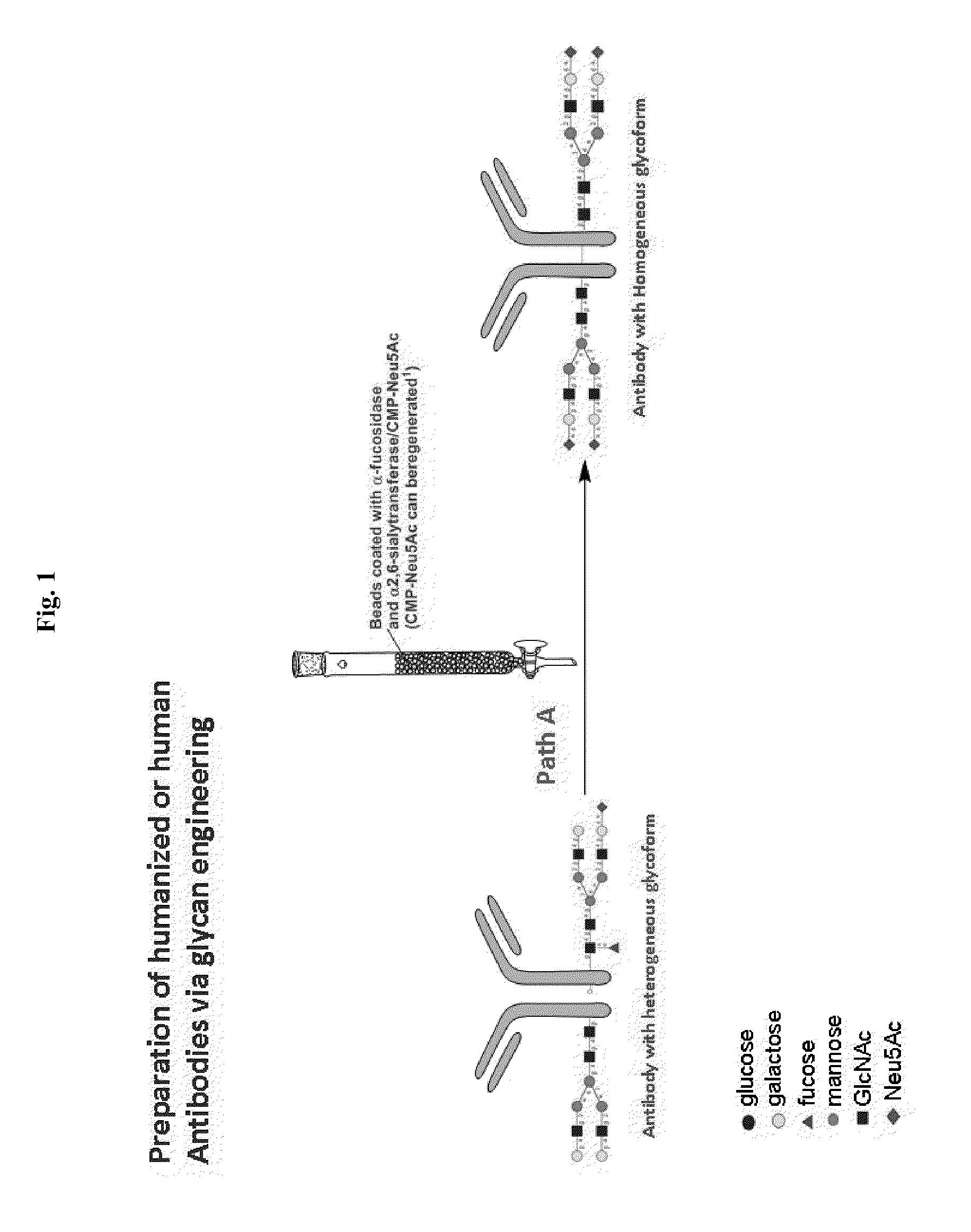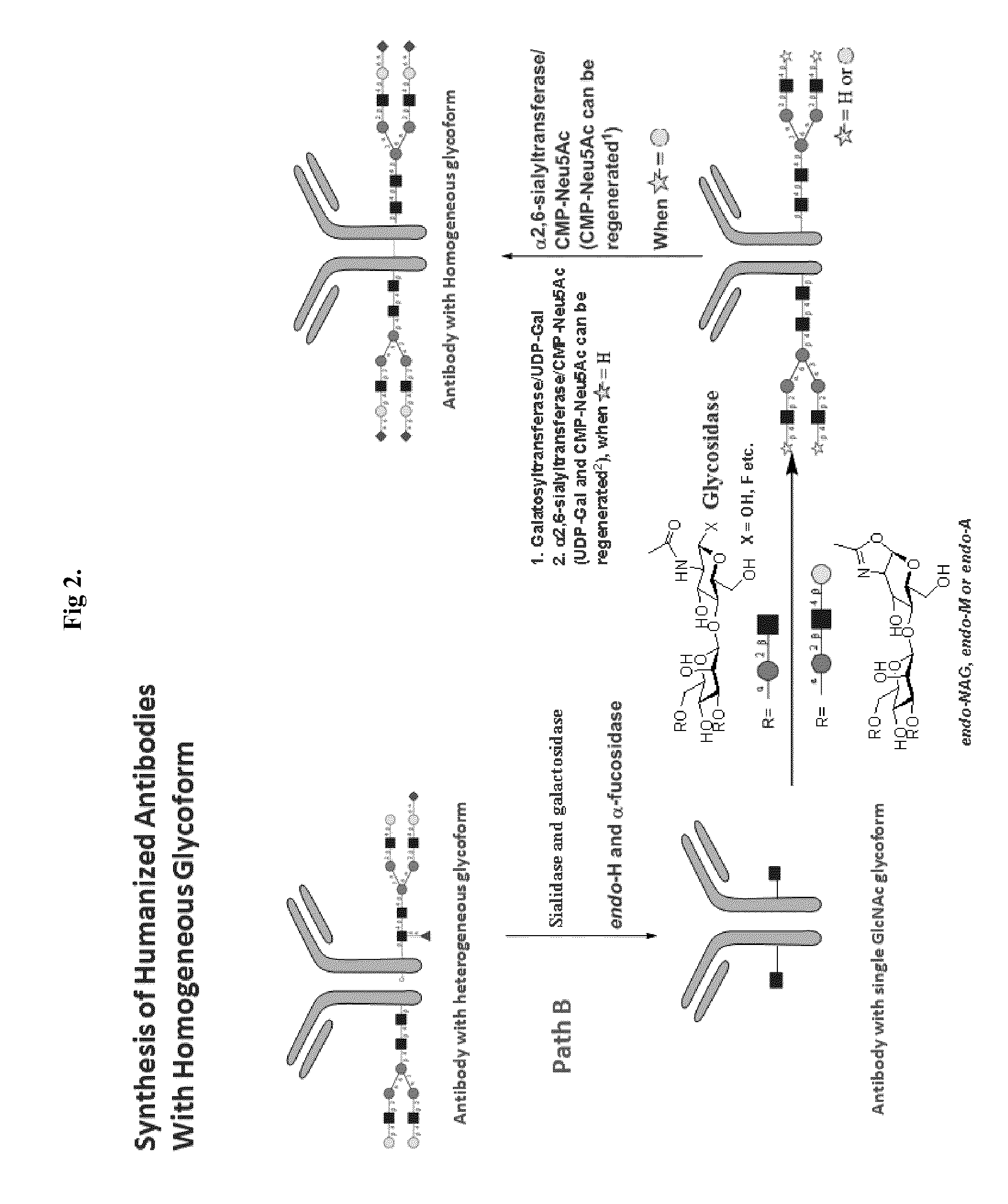Methods for modifying human antibodies by glycan engineering
a technology of glycan engineering and human antibodies, applied in the field of antibodies, can solve the problems of inability to control the glycosylation process, undesired properties, cell death or inhibition of tumor growth, etc., and achieve the effect of increasing the efficacy and stability of the fc region
- Summary
- Abstract
- Description
- Claims
- Application Information
AI Technical Summary
Benefits of technology
Problems solved by technology
Method used
Image
Examples
example 1
Method A for Making Antibodies of the Invention
[0118]Following Path A depicted in FIG. 1, a human antibody can be treated with α-fucosidase to remove core fucoses and with α-2,6-siayltransferase to add terminal α-2,6-linked sialic acids. When necessary, it can be treated with β-1,4-galactosyltransferase to add a galactose and then with α-2,6-siayltransferase to add the terminal α-2,6-linked sialic acids. Preferably, the enzymes used in this method can be immobilized on a support member. In one example, α-fucosidase and α-2,6-siayltransferase are coated onto a plurality of beads and the resultant coated beads are packed in a column. A sample containing an antibody, either obtained from a commercial vendor or produced by a conventional method, is then loaded onto the column under conditions suitable for the enzymatic reactions catalyzed by the α-fucosidase and α-2,6-siayltransferase. The antibody, with core fucose removed and terminal sialic acid added, is then eluted by a suitable so...
example 2
Method B for Making Antibodies of the Invention
[0119]Alternatively, an antibody of this invention can be prepared following Path B described in FIG. 2. FIG. 2 shows an example for preparing an IgG antibody with its Fc region glycosylated with biantennary N-linked oligosaccharides. A human IgG antibody, having a glycosylated Fc region, was treated with sialidase and galactosidase, followed by Endo-H and alpha-fucosidase to produce an antibody having both Ig domains in the Fc region attached to a single GlcNAc residue. The antibody having two single GlcNAc residues attached (one in each of the Ig domains) is then subjected to endoglycosidase-catalyzed transglycosylation to elongate each of the GlcNAc residues to an oligosaccharide. In one example, a synthetic oligosaccharide with suitable leaving group like —OH, F or others is added to the GlcNAc mono-saccharide on the modified antibody via a glycosidase enzyme. Another example is a synthetic oligosaccharide with oxazoline group is ad...
example 3
Method C for Making Antibodies of the Invention
[0120]An antibody of this invention can also be prepared following the process (i.e., Path C) depicted in FIG. 3. In this process, a human antibody with glycosylated Fc region can be first treated with one or more exo-glycosylases to remove core fucoses and to trim the original oligosaccharides attached to the Fc region to trisaccharides. The core fucose-free trisaccharides are then elongated by glysocyltransferases to desired oligosaccharides, e.g., having sugar sequences identical to those found in naturally occurring human antibodies. Finally, the desired oligosaccharides are treated with β-1,4-galactosyltrasferase and α-2,6-siayltransferase sequentially to add galactose residues and then terminal sialic acid residues.
PUM
| Property | Measurement | Unit |
|---|---|---|
| concentration | aaaaa | aaaaa |
| pH | aaaaa | aaaaa |
| structure | aaaaa | aaaaa |
Abstract
Description
Claims
Application Information
 Login to View More
Login to View More - R&D
- Intellectual Property
- Life Sciences
- Materials
- Tech Scout
- Unparalleled Data Quality
- Higher Quality Content
- 60% Fewer Hallucinations
Browse by: Latest US Patents, China's latest patents, Technical Efficacy Thesaurus, Application Domain, Technology Topic, Popular Technical Reports.
© 2025 PatSnap. All rights reserved.Legal|Privacy policy|Modern Slavery Act Transparency Statement|Sitemap|About US| Contact US: help@patsnap.com



